How well is your brand positioned within a specific market?
The answer to this question drives most of the decisions in marketing and PR departments across the globe. Especially if you take into account that 46% of consumers have the habit of buying from brands they are familiar with.
💡 Read: Competitive Analysis: All You Need to Know
How to measure your brand awareness and what can you do to increase it? There’s a metric that gives valuable insights regarding both of these questions – share of voice (SOV).
In this blog, we’ll go through the definition of the share of voice, how you can use it, and why it’s important, so read on.
What is Share of Voice?
Share of voice is a marketing metric referring to the percentage of a specific market or audience that a particular brand reaches or covers with its advertising or messaging. In this sense, this metric gives you information about your brand visibility, awareness, and the impact you have within a specific market or a particular audience.
There are several aspects you can measure through the share of voice. These will give you a clear impression of what you should work on:
- Impressions/reach
- Interactions
- Volume of mentions
- Influence score
In this way, the share of voice will enable you to track a brand’s visibility regarding:
- Social media
- PR
- The overall number of particular posts in the online world (brand name, a particular product, campaign, trend, hashtag, etc.)
- SEO
What is more, this metric enables you to compare your efforts to your competitors and assess your current position. By tracking changes in SOV over time, you can easily identify trends and adjust your strategies accordingly to improve your performance and stay competitive.
Let’s take a look at a couple of examples.
Read How to Do a Social Media Competitor Analysis Using Determ
Different Ways of Tracking the Share of Voice
There are several ways you can track your share of voice in Determ. Here are some of them.
Share of voice by the number of mentions
Let’s take a look at some of the most famous sports brands.
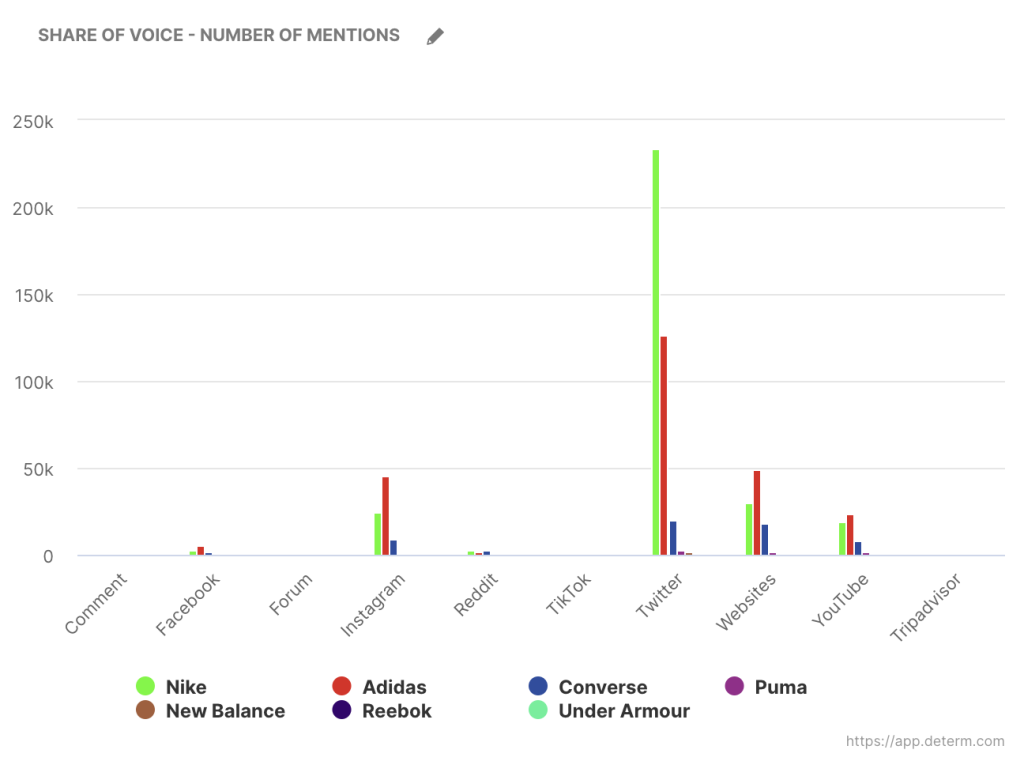
This chart clearly shows that Nike is mostly talked about on Twitter, but it’s losing its upper hand to its competitor Adidas on 4 other major sources: websites, Facebook, YouTube and Instagram.
If we take the number of mentions online as our primary metric, it seems that Nike is way ahead of all of its competitors, with 48% of mentions online belonging to them, followed by Adidas with 39.3% and Converse with 9.3%.
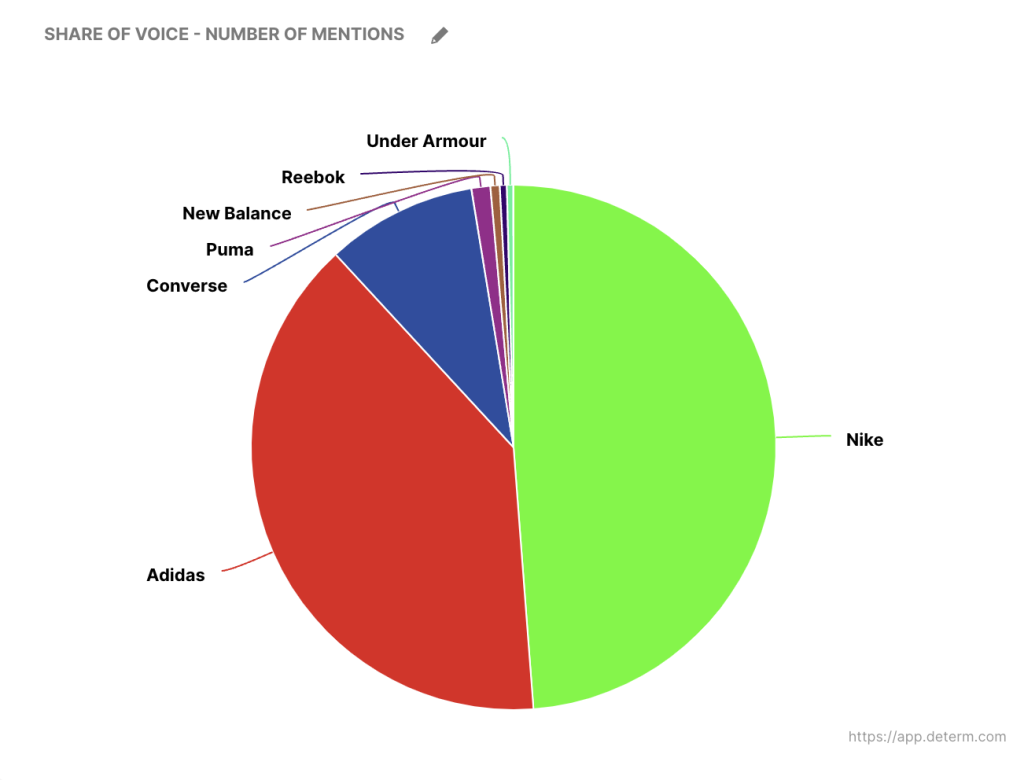
If we dig a little deeper and take a look at the sources these brand are mostly talked about, we get an extra perspective. This may signify a couple of things:
- Twitter is where Nike’s customers prevail and they can use it additionally and increase their paid advertising on this channel
- There is more potential for marketing activities on other channels like Instagram, Facebook and YouTube
- Adidas, its main competitor, is more covered by traditional media with more mentions on websites. This also means that Nike could benefit additionally by nurturing long-term PR relationships with traditional media present on the websites.
If we want to take it up a notch, we could further investigate the top influencers for Adidas among the websites through Determ, and find ways to collaborate with them:
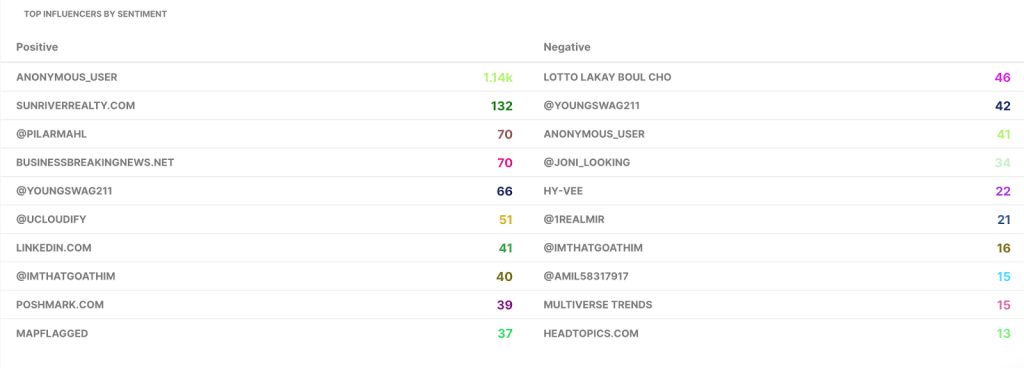
Number of mentions refers to the number of times the name of the brand was mentioned online. Naturally, the higher the number, the more times a name was mentioned. However, it’s up to marketing/PR departments to track the quality of these mentions – a higher number of mentions can signify success of a particular campaign or quite the opposite – a crisis brewing on a specific channel.
Read 4 Examples Of Innovative Brand/Influencer Partnerships
Share of voice by reach
If we want to find out more about the impact of all the aforementioned mentions, we’ll take reach as our secondary metric in combination with the share of voice.
And since we’re talking about global brands, we can take an additional dimension of location. This will show us on which particular markets these brands gather their reach. In this way you can decide where it makes sense to invest more funds into advertising or further PR collaborations.
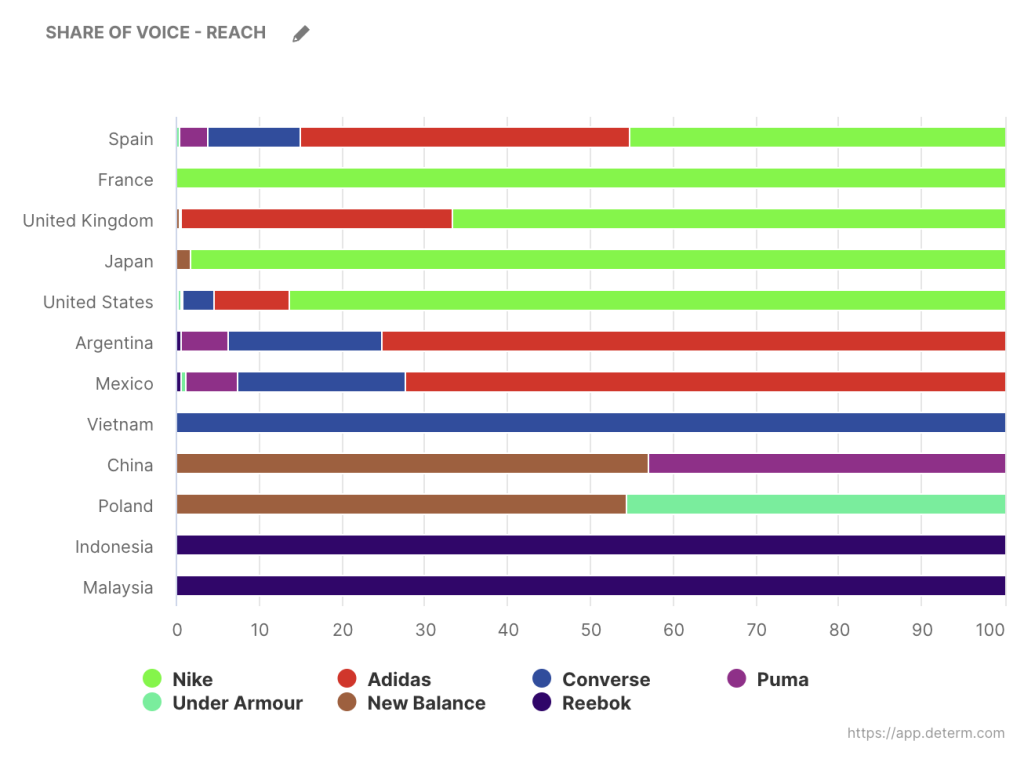
Share of voice by interactions
The number of interactions usually signifies the degree to which a certain content type resonates with the target audience. A particular campaign can reach a huge number of people and it may be mentioned a number of times. But your target audience may not feel the urge to interact with it which is also an incredibly useful information for your marketing team. It may direct your social media and content strategy in the long run. Let’s see how our example brands stand when we take interactions into account:
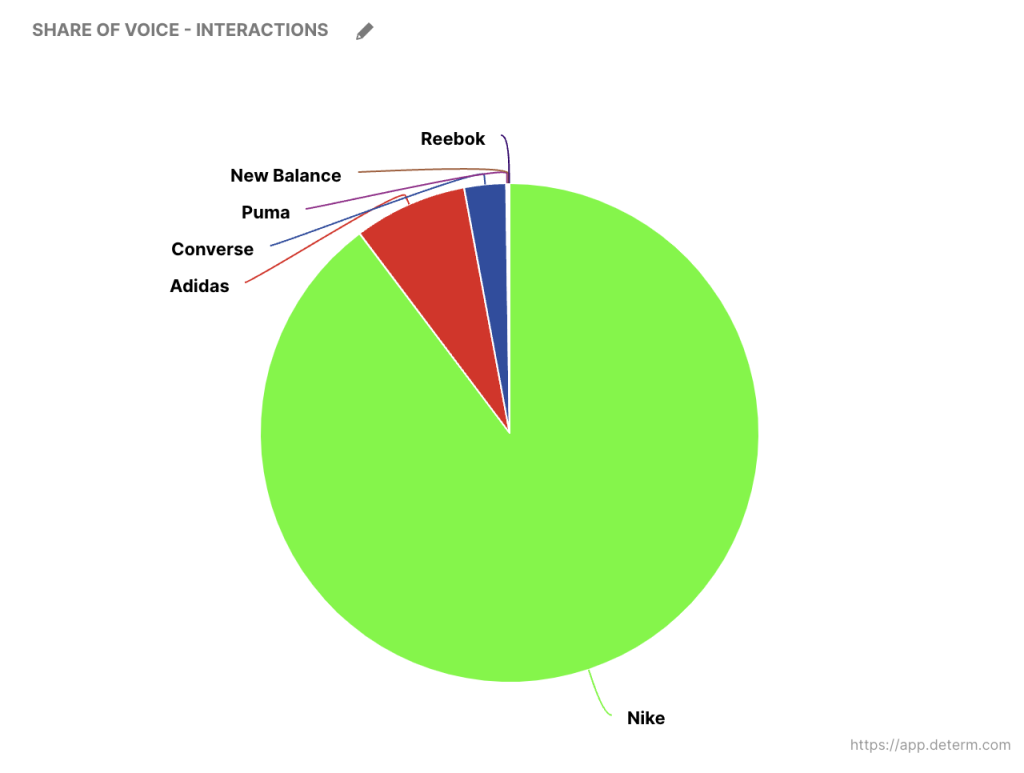
Nike rules the market again with 89% of interactions belonging to their mentions. Under Armour wasn’t shown in the chart at all, which signifies that their mentions provoke very few interactions within the online world – again, something to work on, potentially.
Share of voice by the influence score of mentions
Let’s check the influence score of mentions of these brands.
This will give us an additional perspective:
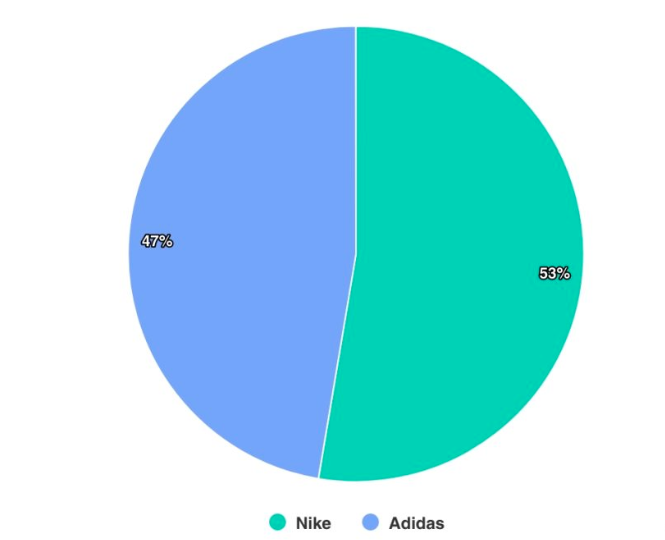
Here, we can see that the influence score of the mentions containing our main two competitors Nike and Adidas is almost the same. This is extremely important for Adidas, for example, because clearly, they’re investing in their brand awareness through influential channels, but it doesn’t bring them as much reach, interactions, and general mentions as it does for Nike. This can direct their efforts to a different channel, different influencer, or even to a different type of content.
Why is Tracking the Share of Voice Important
Knowing your share of voice is a great starting point for assessing the position of your brand on the market. It shows where you are currently, what is your potential and how to get there. It is important for several reasons:
- Competitor analysis: By measuring the share of voice of your brand and your competitors, you can assess your position in the market and identify areas where you need to improve. This information can help you develop more effective marketing strategies and tactics.
- Brand awareness: Share of voice is a good indicator of brand awareness. If your brand has a high share of voice, it suggests that you have a strong presence in the market and that more people are aware of your brand. This can be particularly important for new or lesser-known brands that are trying to establish themselves in a crowded market.
- ROI: Share of voice can also help you measure the return on investment (ROI) of your marketing campaigns. By tracking changes in your share of voice over time, you can see whether your marketing efforts are having an impact on your target audience and whether they are generating a positive ROI.
- Tracking industry trends: Measuring share of voice over time can also help you track changes in the market and identify trends in consumer behavior. This information can help you stay ahead of the competition and adjust your marketing strategies accordingly.
Read 3 Easy Ways to Monitor Competitors in Your Industry
To Conclude
Measuring your share of voice may seem like a complex task, but it yields significant rewards. Using SOV for different aspects of your marketing and PR efforts and segmenting the results based on analytics will help you gain a comprehensive understanding of your company’s presence on the market and its relation to your competitors.
With the help of Determ, the share of voice data is available in only a couple of clicks. Let us show you the benefits for your business.


